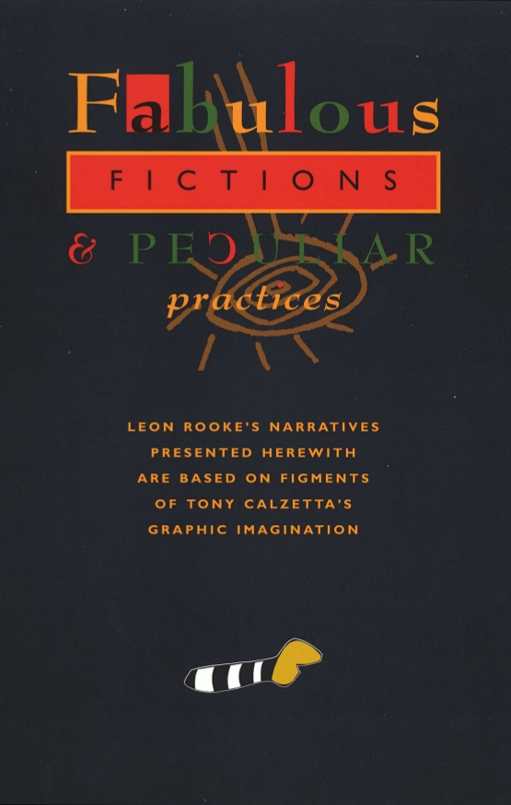Fabulous Fictions and Peculiar Practices
The side-by-side layout of image and story enhances the work of both the book’s creators.
While a collaboration between an author and illustrator is hardly new, writer Leon Rooke and artist/painter Tony Calzetta took an unusual approach to their work in Fabulous Fictions and Peculiar Practices. The short stories and illustrations that make up this volume show both creators’ imaginations at work in their interpretation of the other’s, making it an interesting look into the duo’s creative processes.
Rather than having an illustrator contribute images to an already written work, Fabulous Fictions began with small versions of a number of Calzetta drawings. Rooke wrote very short stories based on some of them, and Calzetta updated some of his works based on the resulting narratives. Calzetta’s work is largely abstract and difficult to describe, but with enough definable shapes throughout to give some direction for a story; that interplay is what makes Fabulous Fictions interesting.
One of the book’s strongest stories is “The Ravening Beasts at Fairy Godfather House.” The image on which it is based suggests a pair of towers or turrets sticking out of water, and Rooke writes about the shaming of dull world leaders as ravening beasts and the escape from that label by those whose lives intersect with the supernatural. Another highlight is “Cézanne’s Muse,” in which Rooke succinctly describes a lifelong relationship between the impressionist painter and a physical muse, based off an image that suggests an arm reaching out from the sky over several loosely defined objects.
In another pairing, an oblong object atop a black platform with lines all around suggests a story titled, in part, “The Scroll of Civilization Survives the Restless Deep,” in which a portrait artist considers suicide, and which references several earlier stories from Fabulous Fictions as a way to tie the book together. Somewhat similar drawings inspire stories called “Son of Scroll” and “Daughter of Son of Scroll,” a pair of short works that react to their parent story.
Of course, the art itself is the strongest connection between stories. The first Calzetta piece, which aligns to the story “How God Talks in His Sleep,” is reproduced in full color, with a three-page, two-sided foldout. The rest are black and white, but printed on a ridged paper stock that nicely shows them off. That presentation and the side-by-side layout of image and story enhance the work of both the book’s creators.
Fabulous Fictions reads best with the whole creative process that produced it in mind, though the quality of Rooke’s and Calzetta’s contributions ensures that its parts are able to stand alone on their own merits.
Reviewed by
Jeff Fleischer
Disclosure: This article is not an endorsement, but a review. The publisher of this book provided free copies of the book and paid a small fee to have their book reviewed by a professional reviewer. Foreword Reviews and Clarion Reviews make no guarantee that the publisher will receive a positive review. Foreword Magazine, Inc. is disclosing this in accordance with the Federal Trade Commission’s 16 CFR, Part 255.

